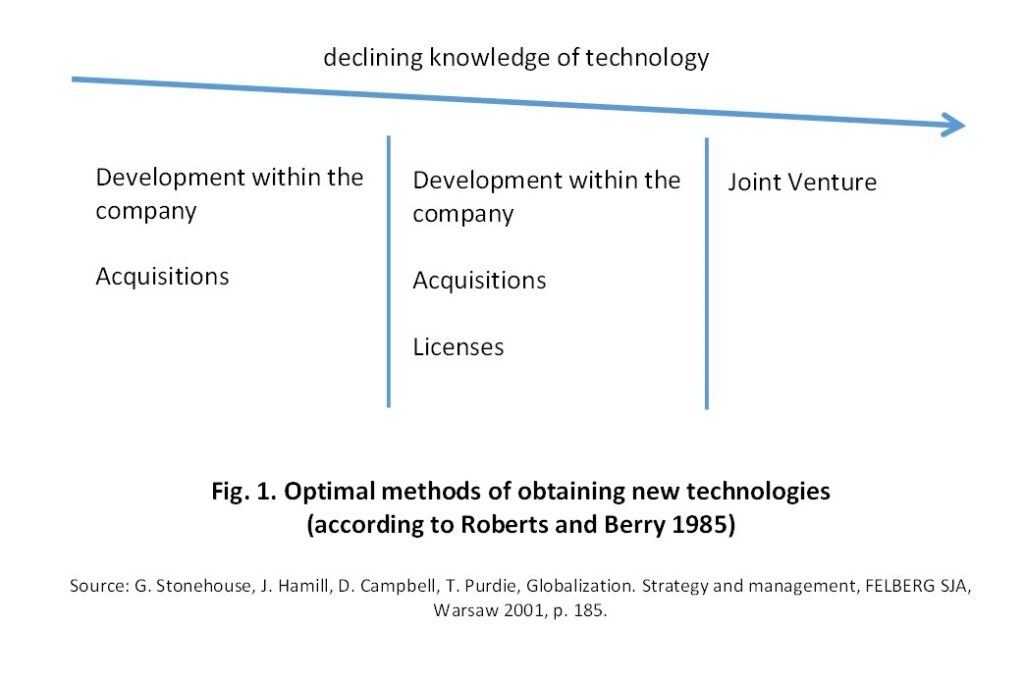Responsible Software Development: How to Reduce Your Application’s Carbon Footprint?
Practical tips on how developers can actively reduce CO2 emissions by optimizing code, infrastructure, and application architecture.
 Author:
Author:The technology selection process is one of the basic stages of technology transfer (including IT solutions) to any company. The selection is preceded by an analysis and assessment of the company’s technological needs, the results of which should answer the basic question:
If the technology can be obtained from in-house sources, the choice of technology usually ceases to be the problem. Further activities related to the acquisition of technology focus on determining how to effectively and efficiently implement the proposal into practice, the shape of which is based on internal possibilities and adopted standards of solutions. If, on the other hand, the necessary technology should be obtained from external sources, the matter of the correctness of choice becomes one of the key issues.
The first indications for a new technology to be acquired through external transfer are provided by a technological audit carried out as part of analyses aimed at the preparation of technological goals and strategy. The technological audit enables (after S. Łobejko):
The results of the audit allow us to determine the requirements for future technologies of the enterprise and to undertake appropriate searches. For this purpose, various sources of information are penetrated to facilitate the decision on which technology to choose, where to find it and how to obtain it.
One of the most important criteria for assessing and selecting a technology is usually the level of innovation of potential solutions. The technology verification process, which takes place in the following stages (after J. Wiśniewska), may help in the process of technology assessment:
In addition to the assessment of technical and economic rationality, the selection of technology should also take into account the aspirations of social groups and the requirements of ecology, and in some cases even the political consequences of its implementation. As can be seen from the above, the process of selecting and assessing technology is extremely complex and requires a variety of knowledge from many fields and disciplines. Hence, technological audit processes are carried out by specially prepared auditors, using proven methodologies.
The company’s knowledge of a technology also influences the choice of technology. An exemplary approach to the choice of technology, depending on its knowledge, is presented in Fig. 1.

As can be seen from the above figure, with high knowledge of technology, the dominant solution is obtaining solutions through own development or acquisitions of companies. With average knowledge, it is recommended to acquire technology by doing own studies, acquisitions and licenses. When the knowledge of the technology is low, working on it alone is highly risky. Hence, in such situations, it may be optimal to cooperate with external partners as part of a Joint Venture.
INNOKREA as part of its own activities supports companies in the transfer of IT technologies, including in the form of outsourcing of employees creating software for the client) and grants licenses for selected IT solutions (e.g. a license to use our system for closed auctions – internalBID.com).
We will write more about the ability of companies to absorb technology in a next publication.

Responsible Software Development: How to Reduce Your Application’s Carbon Footprint?
Practical tips on how developers can actively reduce CO2 emissions by optimizing code, infrastructure, and application architecture.
Green ITInnovation

Green IT: How Technology Can Support Environmental Protection?
An introduction to the idea of Green IT – a strategy that combines technology with care for the planet.
Green ITInnovation

CI/CD + Terraform – How to Deploy Your Application on AWS? – Part 2
Learn about the possibilities of GitHub Actions - how to quickly deploy an application using GitHub Actions using AWS and Terraform technologies.
AdministrationProgramming